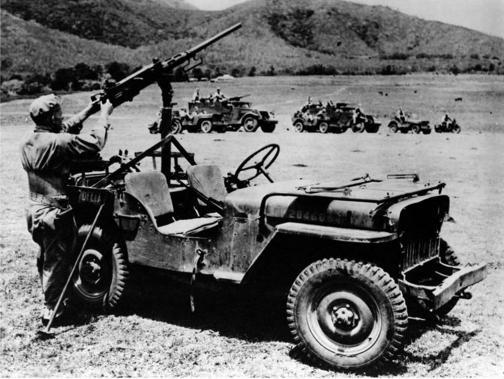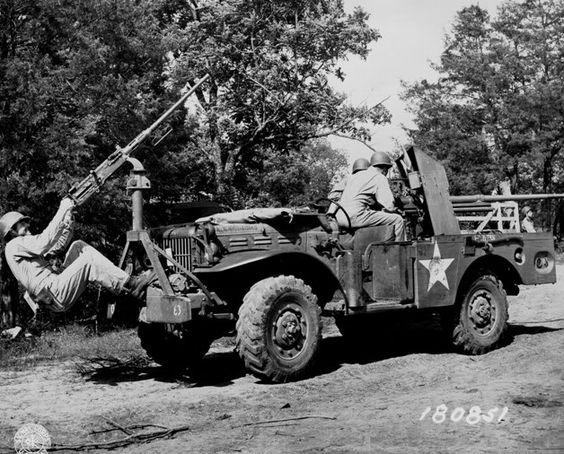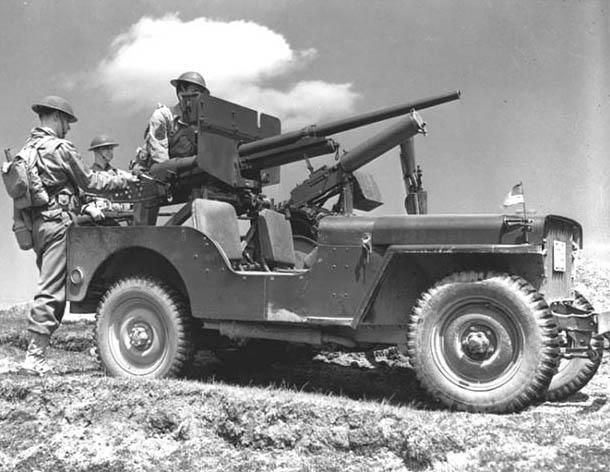-
Contributing Member


Nope Army does it better mobile as well as 4 times the fire power.......
-
The Following 2 Members Say Thank You to CINDERS For This Useful Post:
-
09-03-2016 12:21 AM
# ADS
Friends and Sponsors

-
Advisory Panel


Yes, more IS better. We could have used those in recent past conflicts too...simple older systems. Lots of firepower.
-
-
Contributing Member


-
-
Senior Moderator
(Milsurp Forums)



Originally Posted by
Mark in Rochester

Yep, those are all test photos from Aberdeen I do believe.
Bill Hollinger
"We're surrounded, that simplifies our problem!"
-
The Following 2 Members Say Thank You to Bill Hollinger For This Useful Post:
-
Legacy Member

We could have used those in recent past conflicts too...simple older systems. Lots of firepower.
Actually, the old piece of gear that we could have used more of was the concept of early WW2 assault guns and large bore recoiless rifles on vehicles.
Many of the vehicle ambushes took place around compounds and grape huts which are very good field fortifications. The sunbaked walls were typically 1-2 ft (30-60cm) thick and were comprised of mud, gravel, and straw, these walls were extremely resistant to any direct fire weapons except for the Carl G. At the time of my experience, the biggest AFV in theater was our CDN LAV 3, and the 25mm cannon would not penetrate with HEIT, the SABOT rounds would work but offer no bang after punching a 1" hole in the wall.
It would have been nice to smash a nice man sized hole through that cover, and through the guys standing behind it.
In many cases air support and the rare 155mm direct arty mission was used to smash the structures if things became protracted enough to locate, fix, and strike.
The Cold War got military thinking and design away from guns and shifted to anti-tank missiles, while they are great for popping a T series tank, they are unsuitable for Infantry support, and were not available for our use even if they were.
Later deployments seen the Leopard 1 and eventually the Leopard 2 hit the scene, and did well bunker busting duty. My younger brother (2 RCR) went a year after I did and had the experience of working with the tankers and their Leopard 1's, about which he expressed various misgivings.
Essentially his issues were a "lack of fighting spirit" among the tankers, they didn't have A/C in the tanks and would retire the field around noon each day, once the tank's dust cloud was out of sight, all hell would break loose for the troops still on the advance.
Maybe a Cougar turret on a LAV chassis would have been the solution? However that is all history now, and hindsight is 20/20. The next fight, where ever it may be, will almost certainly be different.
- Darren
1 PL West Nova Scotia Regiment 2000-2003
1 BN Princess Patricia's Canadian Light Infantry 2003-2013
-
-
Contributing Member


Well you answered one of my questions about A/C's in the AFV's, perhaps Sentry they should resurrect a 2016 version of the bazooka to push an opening into the walls light and effective the secondary stuff inside a room would be just as good as a grenade if the explosion did not assist them in their ultimate journey. Also you may be able to answer the copper head 155mm round was it designed for A/T or infrastucture pin point no doubt expensive but far cheaper than the life of one of your men in the field. I only ask as I have an inquiring personality TIA.
-
-
Advisory Panel



Originally Posted by
CINDERS

a 2016 version of the bazooka
That's why he's calling for the 106 to return.
-
-
Contributing Member


Do the powers that be listen to the troops BAR I mean the tankers in the western desert in WWII did not just pack it in and go home at midday because it was to hot, that must have been very demorolizing for Sentry's troop to watch that occur. Sure heavy MBT's are not suited to urban conflict but up gun your lighter AFV's to bolster the support for the PBI. Yep I may be a civie but time and again I have read where the troops on the ground are left holding the bag because some bean counter thought it would be better to buy a 50,000$ toilet seat rather than spending it where it really counted......on the guys at the sharp end.
-
-
Advisory Panel



Originally Posted by
CINDERS

Do the powers that be listen to the troops
No...except when one man put in a request to take the peas out of the macaroni with cheese and peas. They told us it was the only such meal critique they ever got so the did it. But when it matters, they could care less.
-
Thank You to browningautorifle For This Useful Post:
-
Legacy Member


Originally Posted by
CINDERS

Yep I may be a civie but time and again I have read where the troops on the ground are left holding the bag because some bean counter thought it would be better to buy a 50,000$ toilet seat rather than spending it where it really counted......on the guys at the sharp end.
BAR has got this well covered, but let me deviate and tell you all about skis.
In 2004, there I was, North of Inuvik NWT, on my first of two DND sponsored trips above the Arctic Circle. (Gentlemen it may be time to put your helmets on) Among our duties of practicing being cold and ensuring the Russians weren't quietly invading North America we were selected to test new cross country skis for the Army.
We already had skis in the system, they dated back to the 1950's or so, in fact BAR and I probably shared a set over different years despite being years apart in service. They were old hardwood types, with a very rudimentary binding system, known for it's loud slapping noise (a fine tactical advantage) earning them the name: "Bangy Boards". If you've never done skis these were hugely maintenance intensive to have work, stripping and resealing with pine tar, then proper coatings of glide wax, followed by proper application of kicker wax (which had to be temperature matched tot he snow) for actual traction. They were a nuisance to maintain, and the bindings, which were meant to strap to the mukluk boot, were not very good, but in all they did work.
For testing we were given two different bindings one was a modern plastic take on the bangy binding in a powder blue called a Berwyn, the second was a high speed exo-skeletion design, offered great ankle support, super quick detach, and you could snap them free and fight in them.
The exo design got almost unanimous positive reviews, however the Trials officers favoured the Berwyn binding and tried to influence our reviews, in the end they basically said the Berwyn is what will be selected anyway.
We also tested 3 options of skis, bangy boards with the bindings above, a set of modern waxless cruiser skis, and a civilian off the shelf Rossignol Backcountry ski, also waxless.
The bangy boards were held as a control, the cruisers were an improvement, made of fibreglass, lighter, and better spring gave a much more efficient kick and glide, but were narrower and lacked floatation and stability with a rucks and fighting order.
The Backcountry skis were really the way to go, not quite as fast in open tundra, but wide, and stable in rough or soft snow, the heavier machine gunners and weapons crew could traverse soft drifts with ease. They were also more compact, easier to store, carry, and fight with.
We all gave our reviews of the equipment, and 3 years later when I made my 2nd expedition above the circle, we had...
Bangy boards with the 1950's bindings.
As far as I know, when I retired in 2013, we still had not rolled out a new ski, some recent photos seem to show a wild mix of civilian off the shelf, and possibly the cruisers with a Berwyn binding.
The moral is, listening to the troops and providing equipment in a timely fashion is not an army's strong suit. Our procurement process is a carefully crafted bureaucracy, that is a common model across most armies worldwide.
Or take the "New" rucksack, the 1982 pattern (fighting order) webbing was due for replacement, and I had seen new CADPAT rucksacks being trialed in Gagetown when I was a cadet in the late 1990's, flash forward to end of my service career and the troops are finally getting issued a replacement for the '82 in 2012. By all accounts it's basically an oversized dufflebag in Cadpat, and carries like one too. I figured we should have just bought a Bergin, like the Brits and got on with it. Part of the reason why I transferred from a dismounted Infantry battalion to a mechanized battalion, why carry your kit, when your kit can carry you? Our gear wasn't getting any better, or lighter.
- Darren
1 PL West Nova Scotia Regiment 2000-2003
1 BN Princess Patricia's Canadian Light Infantry 2003-2013
-
The Following 2 Members Say Thank You to Sentryduty For This Useful Post:
















 PM
PM













